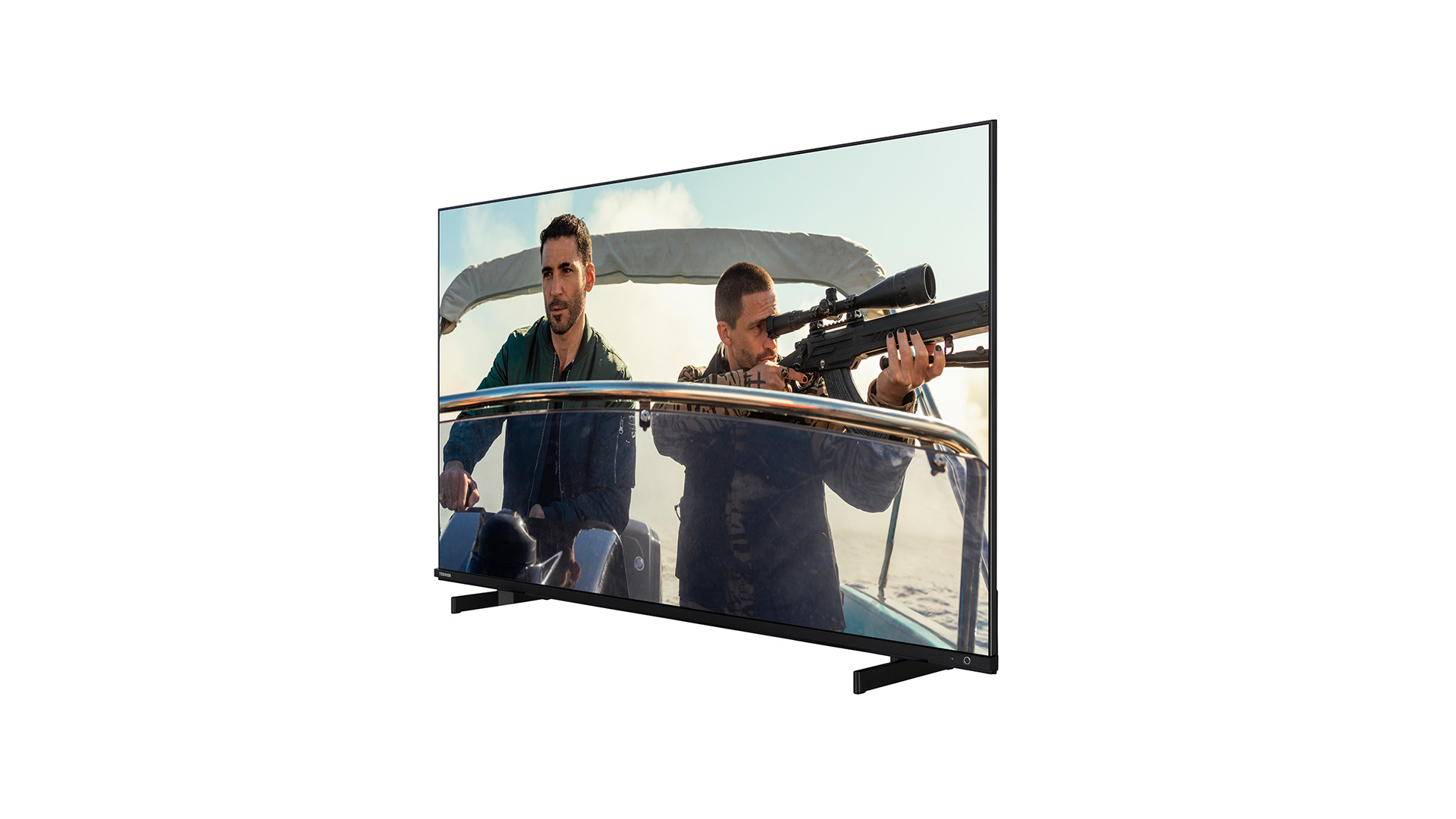What Hi-Fi? Verdict
While inevitably not perfect, the Toshiba 50UK4D63DB is way more enjoyable to watch than it has any right to be
Pros
- +
Consistently engaging picture quality
- +
Good feature count for the money
- +
Potent built-in sound system
Cons
- -
Limited gaming features
- -
Some picture noise in dark scenes
- -
Fairly ineffectual processing
Why you can trust What Hi-Fi?
You don’t have to look far for the Toshiba 50UK4D63DB’s star attraction: it offers 50 inches of 4K HDR pictures for the miserly price of £329 (around $400 / AU$600).
Sadly, if not exactly surprisingly, this sort of small price / big picture combination often turns out to be nothing like the awesome deal it first appears, as the low outlay is only rewarded with dim, lifeless pictures and flimsy sound. Toshiba, though, has a track record of solving the value/quality conundrum, as evidenced in 2021 by its excellent-for-its-money 50UK3163DB. So can the 50UK4D63DB pick the baton up from that illustrious predecessor?
Price
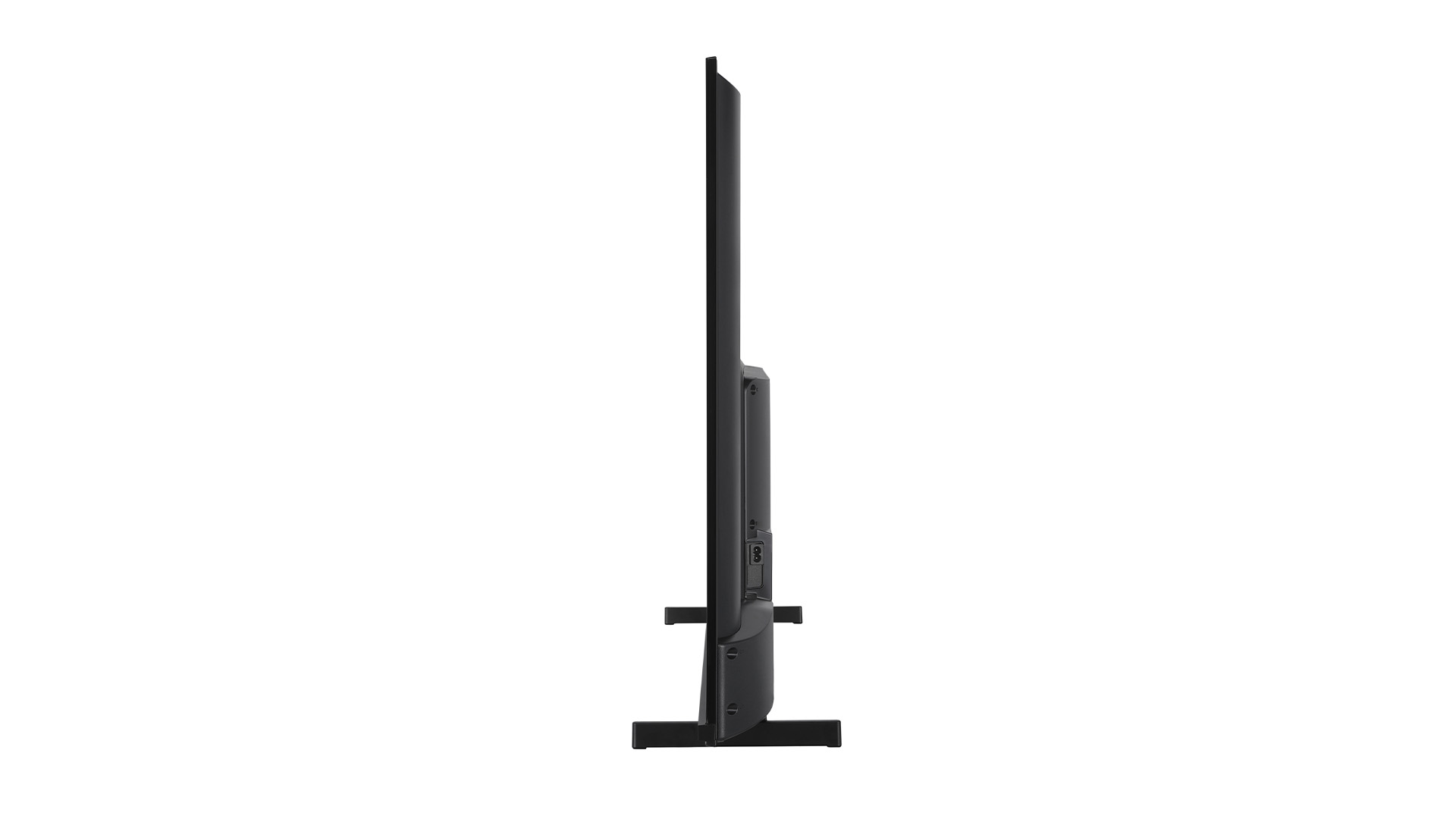
As the UK bit of its name suggests, the Toshiba 50UK4D63DB is only available in the UK, with no similar variants to be found in other territories. Its £329 price in January 2023 is £70 (around $80 / AU$125) less than its already aggressive £399 (around $475 / AU$700) launch price and puts the TV firmly in budget TV territory. Normally, in fact, you’d be struggling to find a decent 40-43 inch set for this sort of money, never mind a 50-inch one.
The other models in the UK4D63DB range are also aggressively priced, with the 43-inch going for £299 (around $350 / AU$525), the 55-inch going for £399 (around $475 / AU$700) and perhaps best of all, the 65-inch going for just £469 (around $550 / AU$850). It’s worth saying, though, that with many TVs, particularly budget models, the picture performance we find at one screen size often doesn’t apply to all screen sizes in the same range. In other words, don’t assume that the bigger or smaller models in the range will perform as well as this one.
Where the 50UK4D63DB specifically is concerned, though, we can confidently say that it has more to offer than the majority of its similarly cheap peers, from its connectivity to its features and, more importantly, its picture and sound quality.
Design
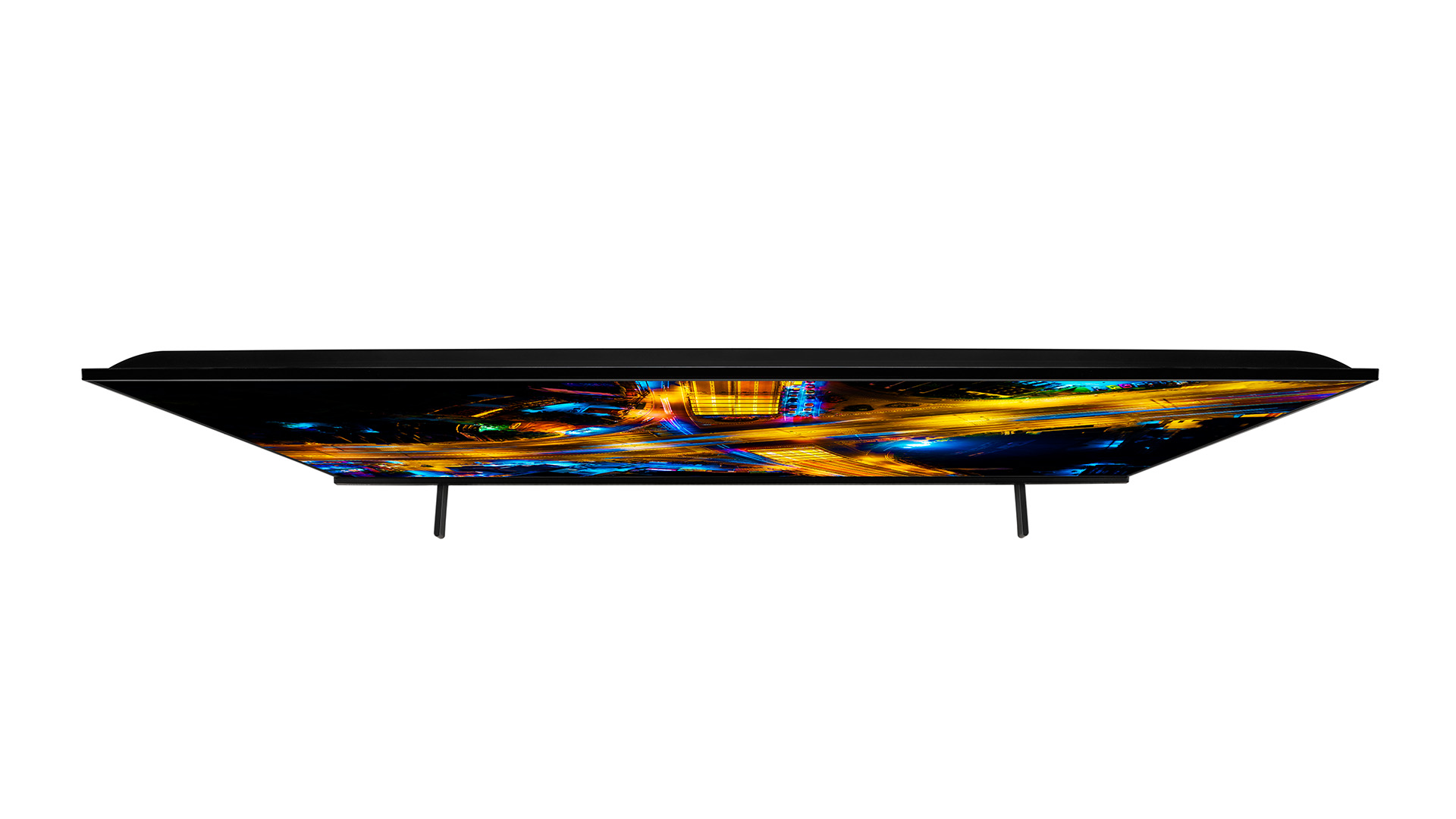
The 50UK4D63DB’s lightweight build goes heavy on the plastic. It still, though, manages to be reasonably attractive for such an affordable model, thanks chiefly to the way the glossy black finish of the top, left and right sides contrasts with the more matte, brushed finish of the bottom edge. We’re also oddly drawn to the way the bottom edge protrudes forward with a slightly industrial, squared-off feel.
The two blade-style feet you get with the TV are solid, easy to attach, leave the TV feeling stable, and become almost invisible when you’re watching the TV head-on.
The 50UK4D63DB’s remote control is well-built and features prominent, well-spaced and well-labelled buttons that helpfully include direct access options to the Prime Video, Netflix, Freeview Play, Twitch and Rakuten TV streaming services.
Features
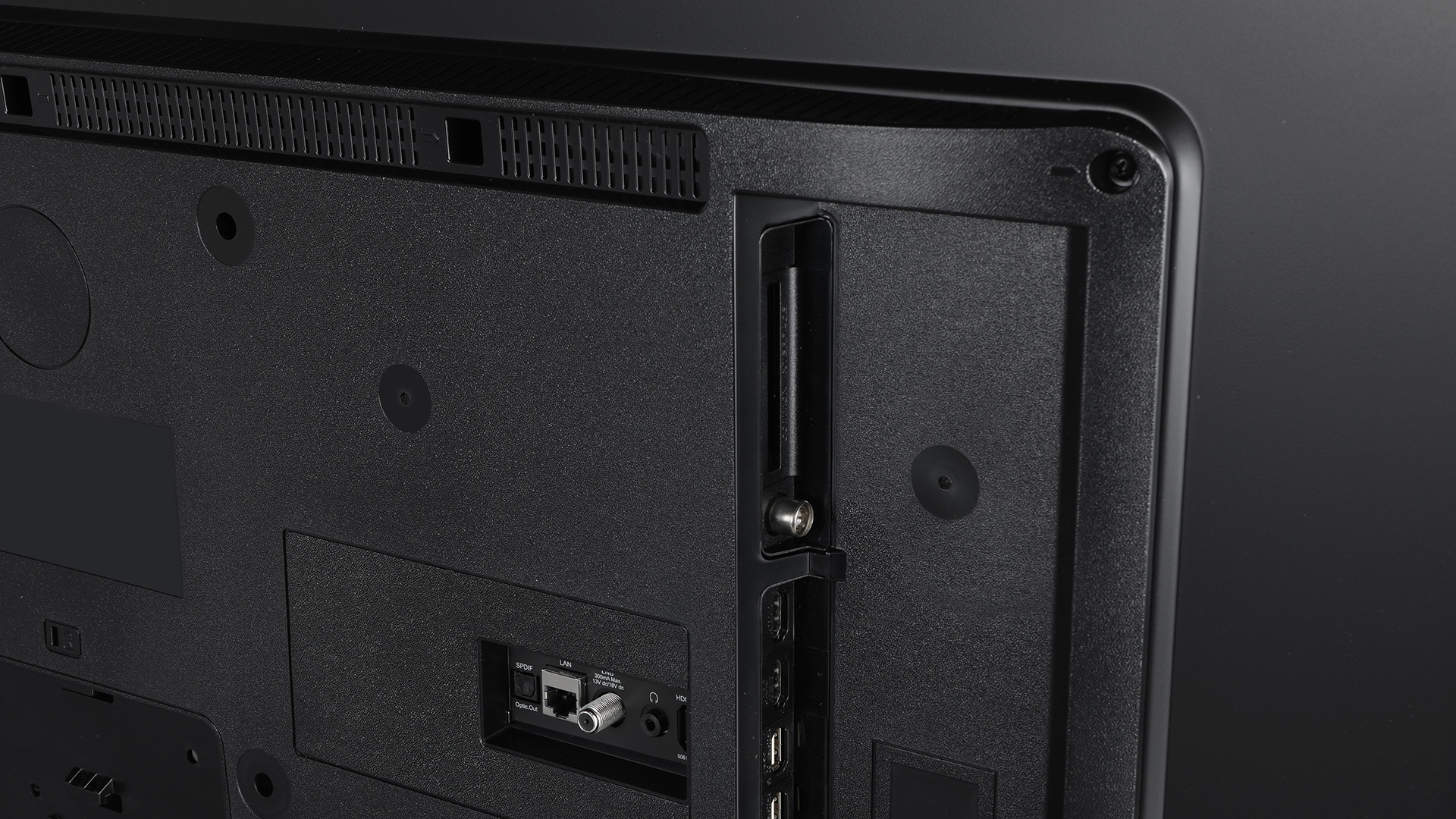
The 50UK4D63DB gets off to a strong start by using a native 4K VA panel with direct LED lighting – a combination that usually delivers better contrast than IPS/edge-lit rivals. Though it’s worth saying right away that the VA panel does limit viewing angles. Try not to watch from more than around 30 degrees off axis if you don’t want to see a significant reduction in contrast and colour saturation.
Inevitably for a 50-inch TV costing this little, the 50UK4D63DB features a 60Hz panel. This, together with the limited bandwidth of its trio of HDMI ports, denies it any support for today’s 120Hz gaming graphics, at either 4K or HD resolutions.
Unexpectedly, the TV is actually detected by the Xbox Series X as supporting VRR (though only up to 60Hz, obviously). However, running VRR into the TV actually causes more screen tearing rather than reducing it as you’d expect. So much so, in fact, that it’s best not to think that the 50UK4D63DB supports VRR at all.
There is genuine support for ALLM, though, where the TV shifts in and out of its fast-responding Game preset depending on what sort of content your console or PC is outputting. Input lag in Game mode is a very low 10.1ms with 60Hz games, too.
The 50UK4D63DB’s HDR support is impressive, thanks to the way it extends to the premium Dolby Vision format as well as the more standard HDR10 and HLG offerings. There’s no support for the Samsung-designed HDR10+ platform, but if you had to pick between Dolby Vision and HDR10+ (there are some more expensive TVs that support both), there’s much more content out there that uses Dolby Vision.
The relationship with Dolby stretches to support for built-in Dolby Atmos audio, too, which is further joined by a DTS Virtual system. Both of these are nice to find at the 50UK4D63DB’s price point – especially when, as we’ll see later, these two premium audio systems are backed up by a startlingly strong sound system developed in partnership with renowned audio brand Onkyo.
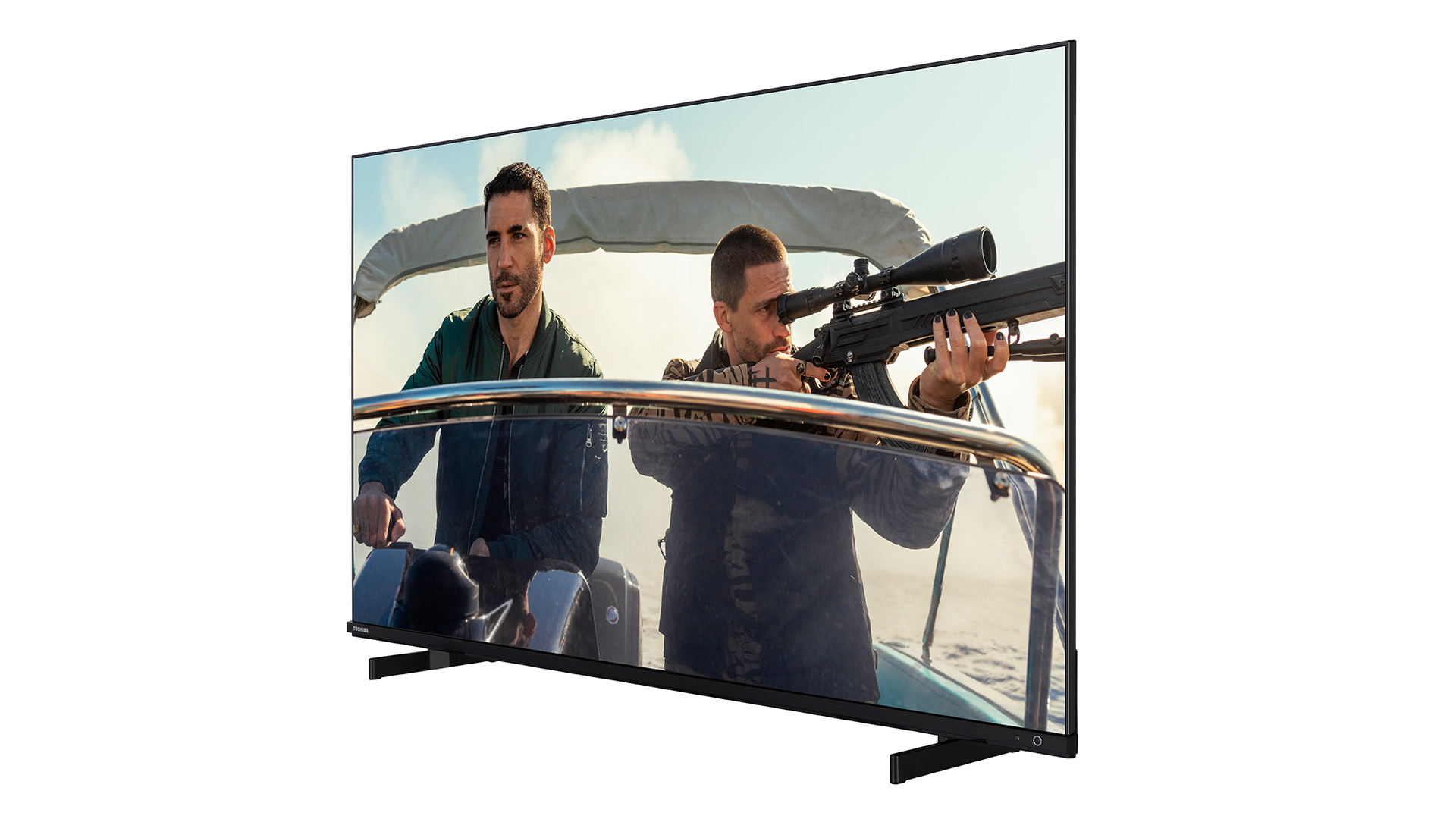
Screen size 50 inches (also available in 43in, 55in, 65in)
Type LCD w/ Direct LED backlight
Resolution 4K
HDR formats HLG, HDR10, Dolby Vision
Operating system Toshiba’s own Linux-based system
HDMI inputs x3
HDMI 2.1? No
Gaming features ALLM, VRR
ARC/eARC ARC
Optical output? No, coaxial instead
Dimensions (hwd, without stand) 65 x 112 x 6.6cm
The 50UK4D63DB even enjoys a bit of promoted video processing courtesy of Toshiba’s TRU Picture Engine. This includes Tru Micro dimming for essentially breaking the image down into small zones for improved processing; Tru Flow for enhanced motion playback; Tru Contour for reducing the appearance of colour banding; and Tru Blue, which appears to make the image look a bit cooler in tone and makes blues look a little more richly saturated. With the exception of the lowest setting of the Tru Flow mode, though, we struggled to find much advantage in using any of the Tru Picture Engine features.
The 50UK4D63DB’s smart features are delivered by Toshiba’s own Linux-driven platform. This is tidily presented and pleasingly uncomplicated in its approach, and also ties in with the TV’s regular picture and sound set-up menus really well.
When it comes to supported content, the young at heart will be happy to find Twitch and TikTok apps on the 50UK4D63DB’s app list, and those six direct app access buttons on the remote are welcome shortcuts. It’s a real shame, though, that Toshiba has not yet been able to persuade Disney+ or Apple TV to join the 50UK4D63DB’s cause.
One last welcome touch is the set’s built-in Amazon Alexa voice control support – though it’s a shame there’s no Alexa/Mic button on the remote, leaving you dependent on a far-field mic implementation.
Picture
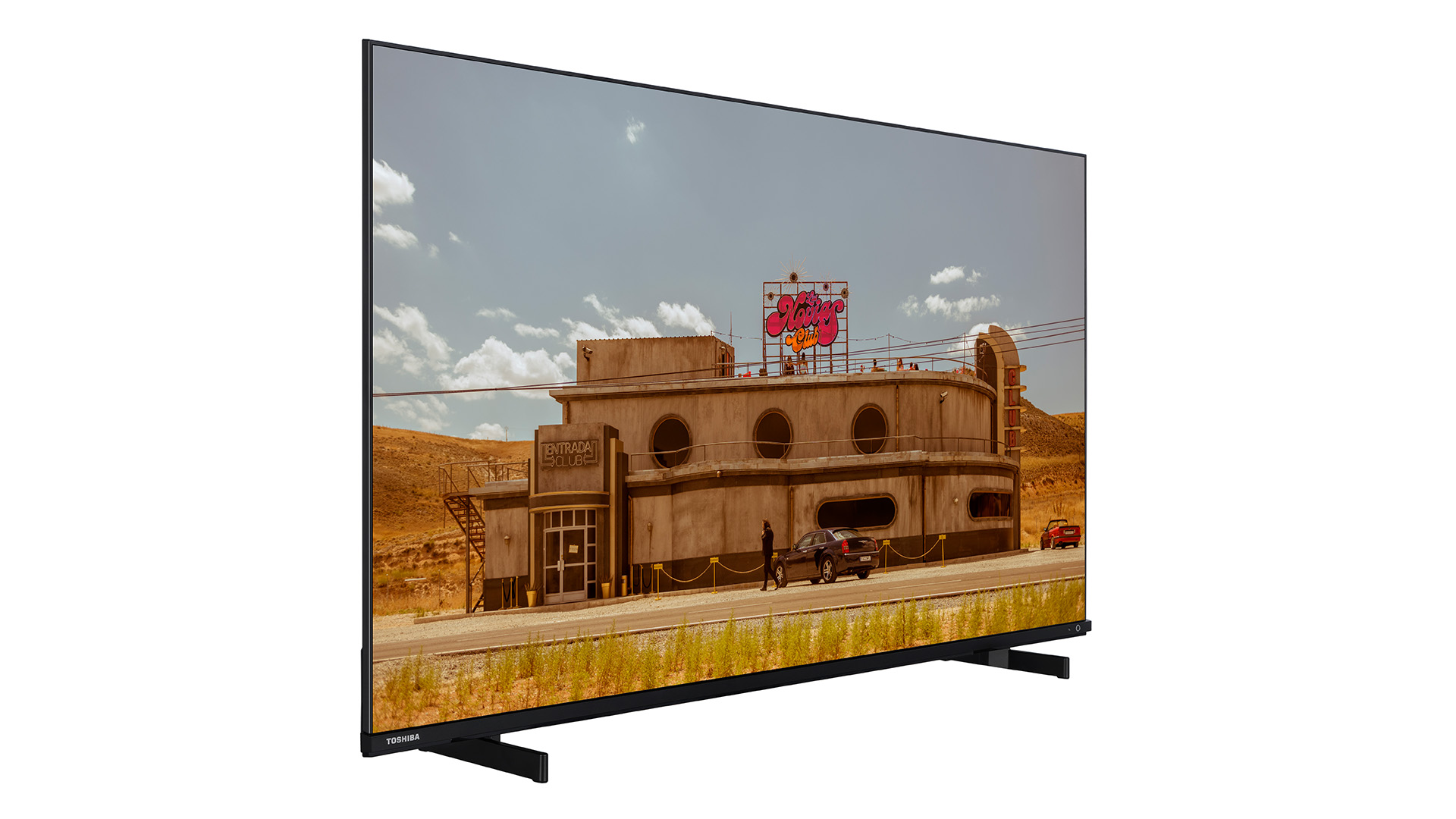
Happily, the 50UK4D63DB does indeed pick right up where its predecessor left off when it comes to serving up much better picture quality than you would reasonably expect of such a cheap 50-inch TV.
For starters, its HDR pictures are noticeably brighter than we typically see with sub-£500 50-55-inch TVs. This is especially true, unexpectedly, with Toshiba’s Cinema preset, which for various other reasons, as we’ll see, is definitely your best all-round option ahead of the default Natural preset.
We’re not talking about brightness levels to rival those of any current premium TVs, of course, be they OLED or LCD. There are numerous mid-range and even lower-mid LCD models out there that can go brighter still, too. But by budget standards, the 50UK4D63DB produces comfortably more light with both full-screen bright HDR images and small HDR highlights than expected. The highlighting holds up even within already bright shots too, adding up to a more consistent and convincing HDR experience than you’d normally ever see at this price point.
Helping its HDR performance out is the way the TV retains better black levels despite its brightness than we customarily find on budget TVs. Inevitably there’s a degree of greyness lying over dark scenes – or the black bars above and below wide aspect ratio films – that you hope not to see with high-end TVs, but it’s not nearly as pervasive as it typically is with other such affordable sets. As such, it seldom really breaks your immersion in what you’re watching, especially given that the 50UK4D63DB is surprisingly good at reproducing low brightness details in dark areas, avoiding the flat, hollow feeling that so many budget TVs suffer with.
It’s worth noting here that while the 50UK4D63DB always looks better than expected with dark HDR (and, actually, SDR) scenes, it benefits more than usual from receiving Dolby Vision signals whenever you can find them.
The 50UK4D63DB also follows its 50UK3163DB predecessor in achieving a genuine 4K feeling with the sharpness and detail density of its pictures. It maintains that clarity better than most when there’s motion in the frame, too, and while it’s naturally at its best with native 4K, it upscales HD very credibly and naturally for such an affordable TV too.
We don’t find that the screen needs help often from its motion processor, even with action-packed 24fps movies, but if you do find the screen’s native judder a touch too much, the Tru Flo processing’s Low setting does a decent job of taking the edge off without creating the dreaded soap opera effect (or too many unwanted digital side effects). Be warned, though, that Tru Flo’s more powerful settings are a bust.
The 50UK4D63DB punches above its price with its colour, too, achieving saturation levels we’ve seen TVs costing many times as much fail to achieve. That gives you at least a flavour of the wide colour gamuts that accompany the vast majority of HDR sources.
The screen’s lack of brightness inevitably limits the TV’s colour volume range versus more premium LCD TVs, but aside from some occasional clipping (loss of shadow detail) in the very brightest, peak luminance parts of HDR images, the degree of colour saturation always feels in harmony with the available light. There’s no faded or wan look to skin tones, while heavily saturated hues don’t tip over into gaudiness or unnaturalness despite looking more vibrant than might have been expected.
Note that the 50UK4D63DB’s best colour performance is found using its Cinema preset. The default Natural preset, in particular, can cause dark scenes to take on a quite pronounced bluish glow. Even in the Cinema preset, colours in dark scenes look less punchy and effective than they are in bright scenes. But this is only to be expected at the 50UK4D63DB’s level of the market, and again it happens nowhere near as badly as it does with many other budget TVs.
Sound
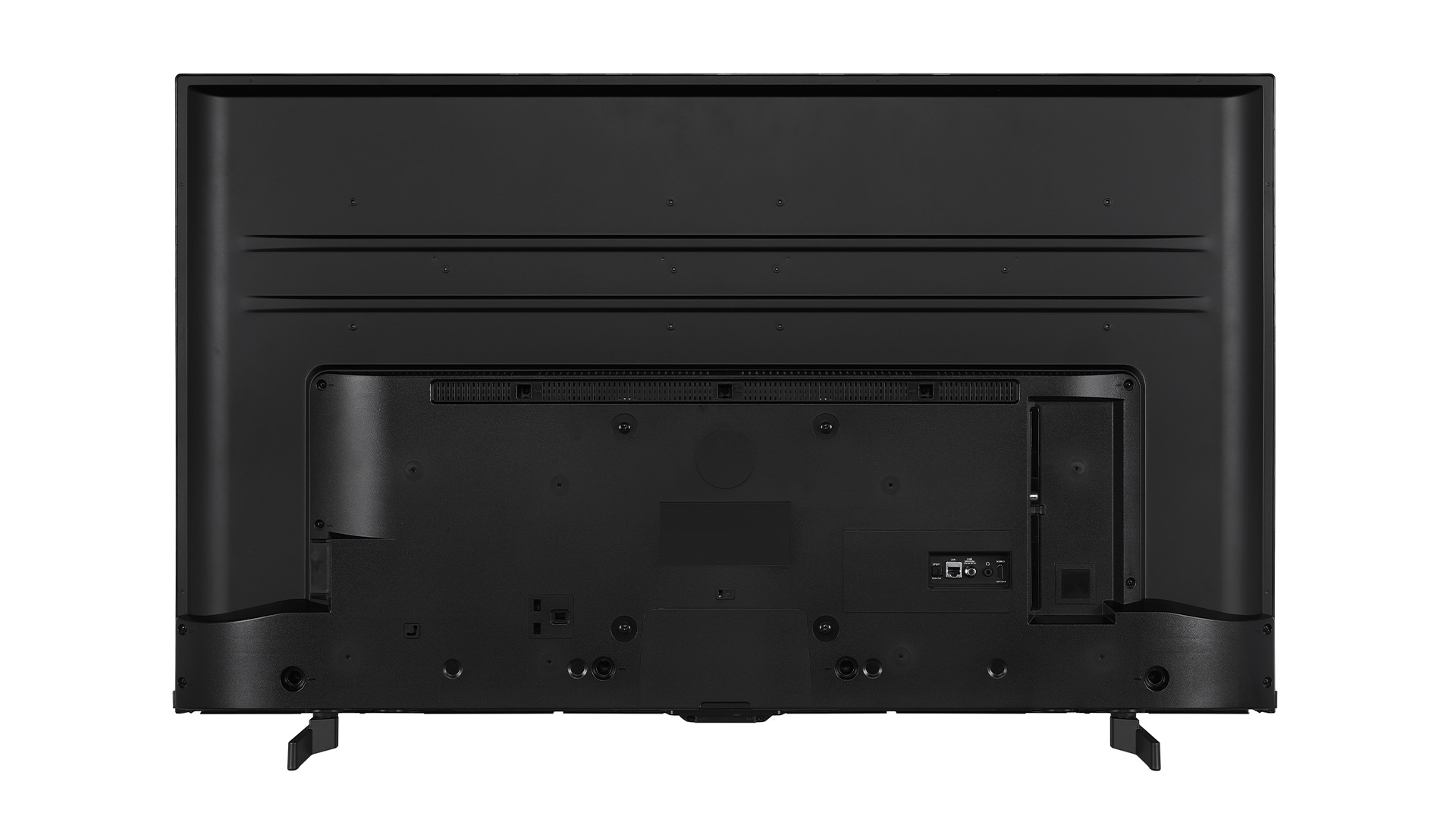
With Dolby Atmos soundtracks, the 50UK4D63DB produces a much more open, detailed and clean sound than you’ve any right to expect for a TV costing so little. Voices sound clear and reasonably well contextualised without becoming too bright or boxed in. There’s a solid amount of separation to left and right that happens without displacing dialogue from the screen, and the sound enjoys a reasonably ‘forward’ quality, rather than everything sounding as if it’s happening behind the screen.
There’s also enough power to push to high volumes before anything sounds uncomfortable or the speakers start to crackle, drop out or buzz.
There isn’t much bass, which can leave treble sounding a little exposed when the going gets dense, but overall the 50UK4D63DB sounds exceptional for a 50-inch 4K TV at this price.
Verdict
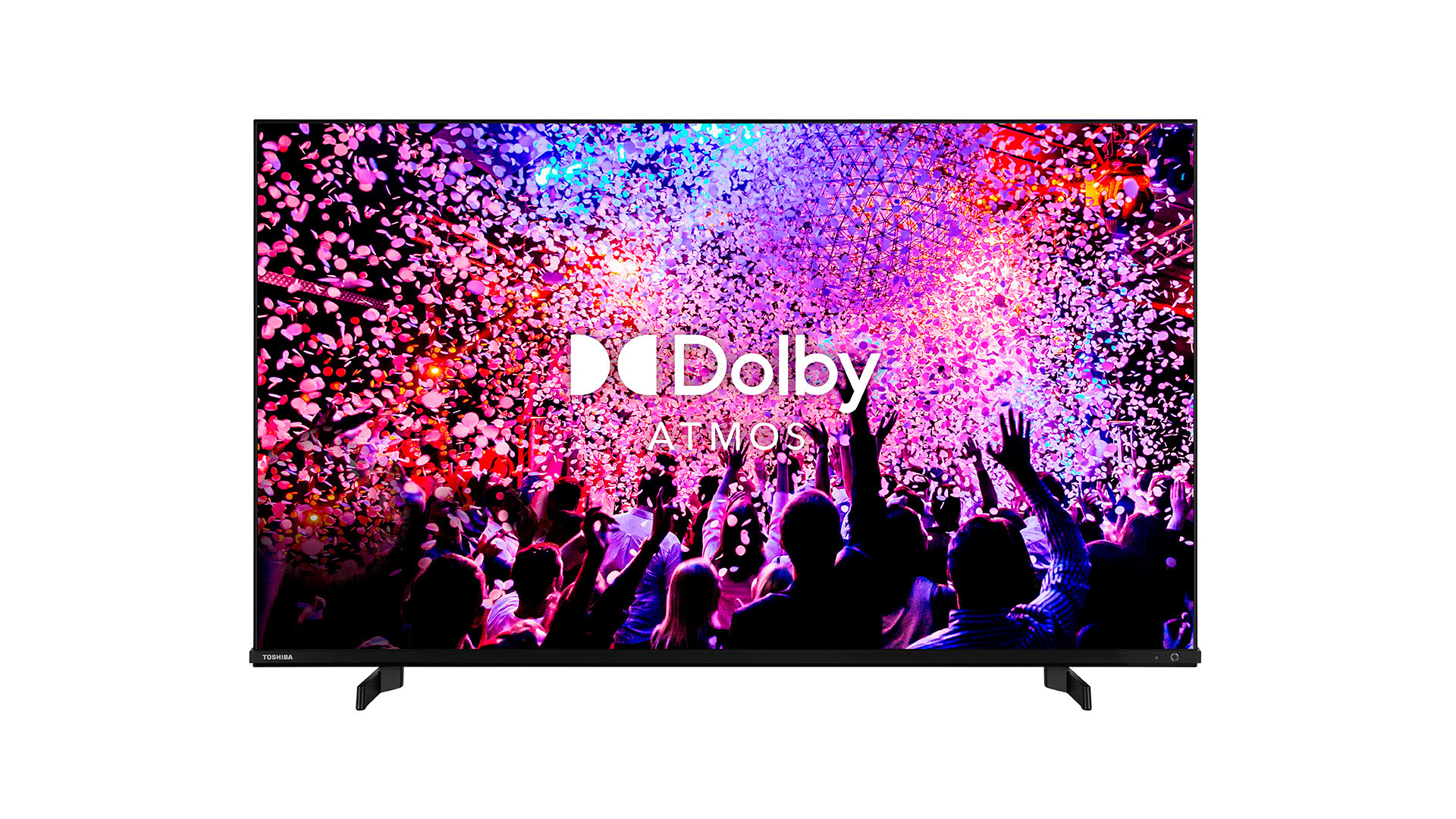
While the Toshiba 50UK4D63DB can’t fully escape its budget nature, there’s simply no 50-inch TV that currently offers a better all-round combination of performance and features available for such a low price.
SCORES
- Picture 4
- Sound 4
- Features 3
MORE:
Read our review of the TCL 55C735K
Also consider the Samsung 43AU7100
John Archer has written about TVs, projectors and other AV gear for, terrifyingly, nearly 30 years. Having started out with a brief but fun stint at Amiga Action magazine and then another brief, rather less fun stint working for Hansard in the Houses Of Parliament, he finally got into writing about AV kit properly at What Video and Home Cinema Choice magazines, eventually becoming Deputy Editor at the latter, before going freelance. As a freelancer John has covered AV technology for just about every tech magazine and website going, including Forbes, T3, TechRadar and Trusted Reviews. When not testing AV gear, John can usually be found gaming far more than is healthy for a middle-aged man, or at the gym trying and failing to make up for the amount of time he spends staring at screens.
